26th August, 2025
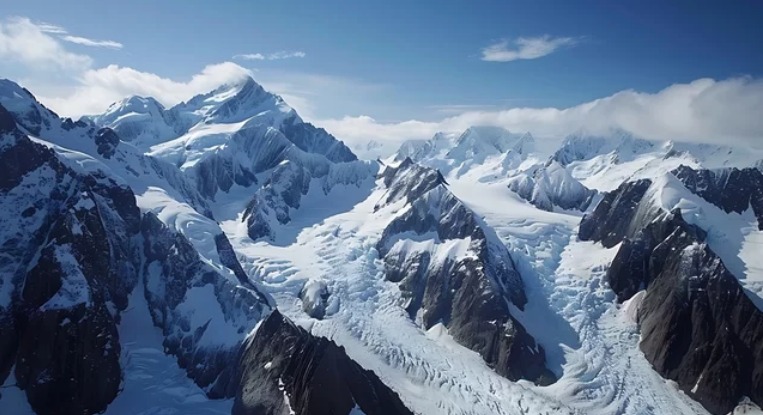
Apr 01, 2024
Island Peak Climbing In September
- Island Peak Climbing Highlights: Why Island Peak Climbing in September
- How Difficult to Climb Island Peak
- Island Peak Climbing In September Weather, Climate, and Temperature
- Permit Cost for Island Peak in September
- Lukla Flight
- Food, Accommodation, Guide, and Porter
- What Should I Pack for Island Peak Climbing
- Can I Hire Equipment from Chhukung
- Solo Island Peak Climbing
- Why Sherpa Expedition has Everyday Departure for Island Peak
- Is Dangerous to Climb Island Peak
- Successful Tips to Climb Island Peak
- Conclusion
- Island Peak Climbing Packages
Climbing Island Peak in September offers an exhilarating adventure amidst the majestic Himalayas of Nepal. Island Peak, also known as Imja Tse, stands at 6,189 meters (20,305 feet) and is renowned for its stunning views and challenging ascent, making it a popular choice for climbers looking to combine trekking and mountaineering.
September is an ideal time to attempt Island Peak due to favorable weather conditions following the monsoon season. The month typically sees clear skies, stable weather patterns, and reduced precipitation, providing optimal climbing conditions. Daytime temperatures at lower altitudes range from 10°C to 20°C (50°F to 68°F), offering comfortable trekking weather, while higher altitudes experience cooler temperatures, especially during early mornings and evenings.
The climbing route to Island Peak traverses through the beautiful Everest region, passing through picturesque Sherpa villages such as Namche Bazaar, Pangboche, and Dingboche. Trekkers and climbers can experience Sherpa culture firsthand, visiting monasteries adorned with prayer flags and enjoying warm hospitality in local teahouses along the way.

ISLAND PEAK CLIMBING
Sherpa Expedition & Trekking (Est.1977) are pleased to announce FOR ADVENTURERS the most awesome, exhilarating & unforgettable climbing and treks on offer anywhere today!...
Climbing Island Peak requires a moderate level of technical skill, including the use of basic mountaineering equipment like crampons, ice axes, and ropes. Guides and porters play a crucial role in supporting climbers, providing expertise in route finding, handling equipment, and ensuring safety throughout the ascent. They assist in setting up base camps, navigating glacier terrain, and monitoring climbers' acclimatization progress.
Preparation for an Island Peak expedition in September involves physical conditioning to build endurance and strength, essential for tackling the challenging ascent. Proper acclimatization is crucial to prevent altitude sickness, with gradual ascent and rest days incorporated into the itinerary. Climbers must pack appropriate gear such as insulated clothing, waterproof layers, sturdy boots, and a quality sleeping bag to stay comfortable and safe in the mountain environment.
Climbing Island Peak in September offers not only the thrill of reaching a high-altitude summit but also the opportunity to immerse oneself in Nepal's rich natural beauty and cultural heritage. It is a journey that rewards climbers with breathtaking panoramic views of Everest, Lhotse, and Ama Dablam, combined with the satisfaction of conquering a significant Himalayan peak in favorable autumn conditions.
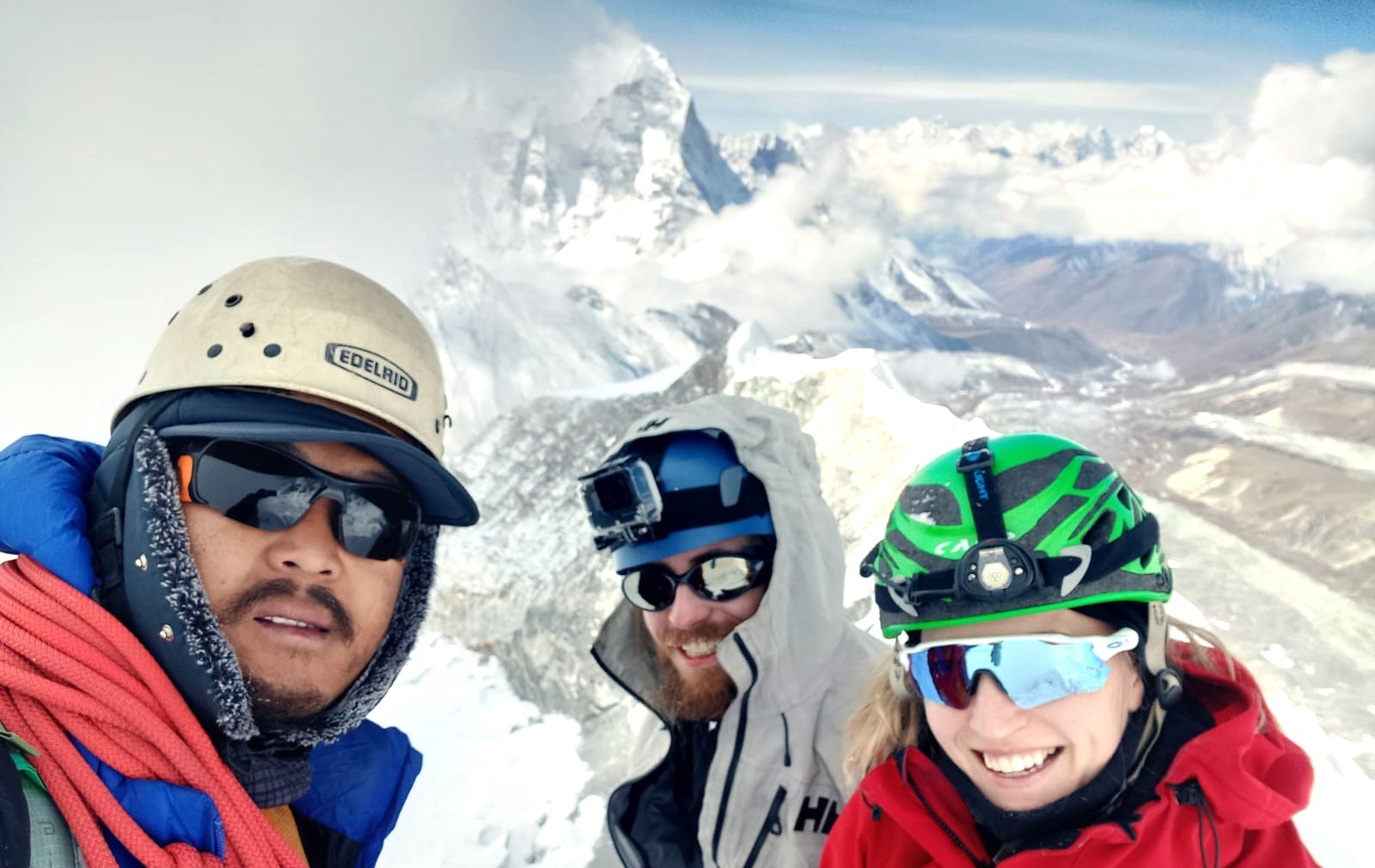
ISLAND PEAK EXPEDITION 15 DAYS
Island Peak, also known as Imja Tse, is a popular peak located in the Khumbu region of Nepal. This peak is a part of the Himalayas and stands tall at a height of 6,189 meters above sea level. Island P...
Island Peak Climbing Highlights: Why Island Peak Climbing in September
Climbing Island Peak in September offers a blend of favorable weather conditions, stunning scenery, and cultural experiences, making it an ideal time for mountaineering enthusiasts to tackle this iconic peak in the Everest region of Nepal. September marks the end of the monsoon season, bringing clear skies and stable weather, which enhance visibility and provide optimal climbing conditions. The moderate temperatures during the day, ranging from 10°C to 20°C (50°F to 68°F), ensure comfortable trekking and climbing, although temperatures drop significantly at higher altitudes, requiring appropriate cold-weather gear.
The journey to Island Peak is enriched by cultural interactions in Sherpa villages like Namche Bazaar and Dingboche, where trekkers can experience local hospitality, visit monasteries adorned with prayer flags, and gain insights into Sherpa culture and traditions. The technical ascent involves moderate mountaineering skills, including navigating glacier terrain and ascending steep sections, culminating in a challenging ridge climb to the summit. Guides and porters play a crucial role in ensuring safety, providing navigation expertise, and managing logistics throughout the expedition.
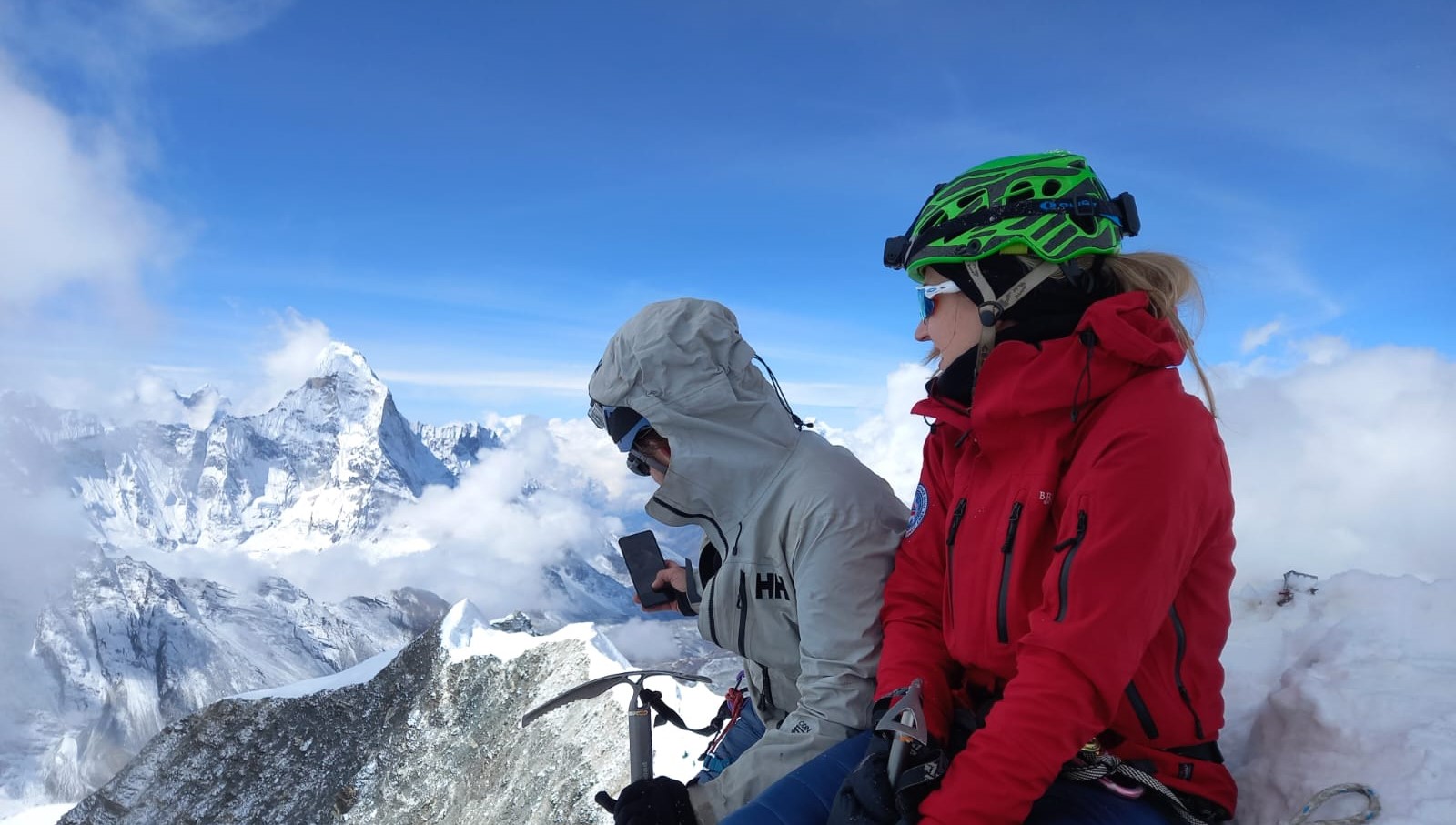
ISLAND PEAK EXPEDITION 14 DAYS
Island Peak Expedition is a 14-day adventure tour that takes you to the heart of the Himalayas, where you can witness the beauty of the mountains, valleys, and glaciers. Island Peak, also known as Imj...
How Difficult to Climb Island Peak
Climbing Island Peak presents a moderate technical challenge suitable for climbers with some prior mountaineering experience. While not as technically demanding as some of the higher peaks in the Everest region, Island Peak requires proficiency in basic mountaineering skills such as using crampons, ice axes, and ropes. The climb involves ascending through glacier moraines and negotiating crevasses, particularly on the final summit ridge.
The difficulty of climbing Island Peak lies in its altitude and the physical demands of sustained climbing at high elevation. The peak stands at 6,189 meters (20,305 feet), necessitating careful acclimatization to prevent altitude sickness and ensure a safe ascent. Climbers should be prepared for long days on the mountain, navigating varied terrain and potentially challenging weather conditions.
Choosing a reputable trekking company and experienced guides enhances safety and support during the climb. They provide essential guidance on route finding, manage logistics such as setting up base camps and arranging meals, and monitor climbers' health and well-being throughout the expedition.
Overall, while Island Peak is accessible to climbers with moderate experience, it requires physical fitness, mental preparedness, and respect for the mountain environment. Successfully summiting Island Peak rewards climbers with breathtaking panoramic views of Everest and neighboring peaks, along with a sense of accomplishment in conquering one of Nepal's iconic Himalayan summits.
Island Peak Climbing In September Weather, Climate, and Temperature
Climbing Island Peak in September offers climbers favorable weather conditions as the monsoon season subsides, bringing clearer skies and more stable weather patterns to the Everest region. Daytime temperatures at lower altitudes range from 10°C to 20°C (50°F to 68°F), providing comfortable trekking and climbing conditions. However, temperatures drop significantly at higher altitudes and during the early morning and evening, requiring climbers to pack appropriate cold-weather gear.
The climate in September is generally dry, with reduced precipitation compared to earlier months, minimizing the risk of encountering heavy rainfall or snowfall that could impact climbing conditions. Clear visibility enhances the trekking and climbing experience, offering stunning views of Himalayan peaks such as Everest, Lhotse, and Ama Dablam along the route.

ISLAND PEAK SUMMIT RETURN BY HELICOPTER
Many of us only dream of standing on a tall peak looking down on the world. This is a great climb that will satisfy this desire. Island Peak, also referred to as Imja Tse, is a 6187-meter high peak in...
Permit Cost for Island Peak in September
To climb Island Peak in September, climbers need several permits. The main permits required include the Sagarmatha National Park Entry Permit and the Island Peak Climbing Permit. The Sagarmatha National Park Entry Permit costs approximately USD 30 per person, while the Island Peak Climbing Permit costs around USD 250 for up to 4 climbers, with an additional fee for each additional climber. These permits are obtainable through registered trekking agencies in Kathmandu or upon arrival in Lukla.
Lukla Flight
The flight to Lukla from Kathmandu serves as the starting point for the Island Peak expedition. In September, flights to Lukla are generally operational, with improved weather conditions compared to the monsoon season. However, weather in the mountains can be unpredictable, and flights may be subject to delays or cancellations due to fog or adverse weather. It's advisable to book flights in advance and remain flexible with travel plans to accommodate potential delays.
Food, Accommodation, Guide, and Porter
During a September climb of Island Peak, accommodation along the trekking route consists primarily of teahouses or lodges offering basic amenities such as beds, blankets, and communal dining areas. Food options include traditional Nepali dishes like dal bhat (rice and lentils) along with international cuisines, ensuring climbers have sufficient energy for the climb. Teahouses may have reduced occupancy in September, allowing for more flexibility in accommodation choices.
Hiring a guide and porter is highly recommended for climbing Island Peak to ensure safety, navigate the route, and manage logistical aspects such as accommodation and meals. Guides are familiar with the terrain, weather patterns, and emergency procedures, providing essential support throughout the expedition. Porters assist with carrying gear, easing the physical burden on climbers and allowing them to focus on the ascent. Their local knowledge and experience contribute to a smoother and more enjoyable climbing experience in September's favorable weather conditions.
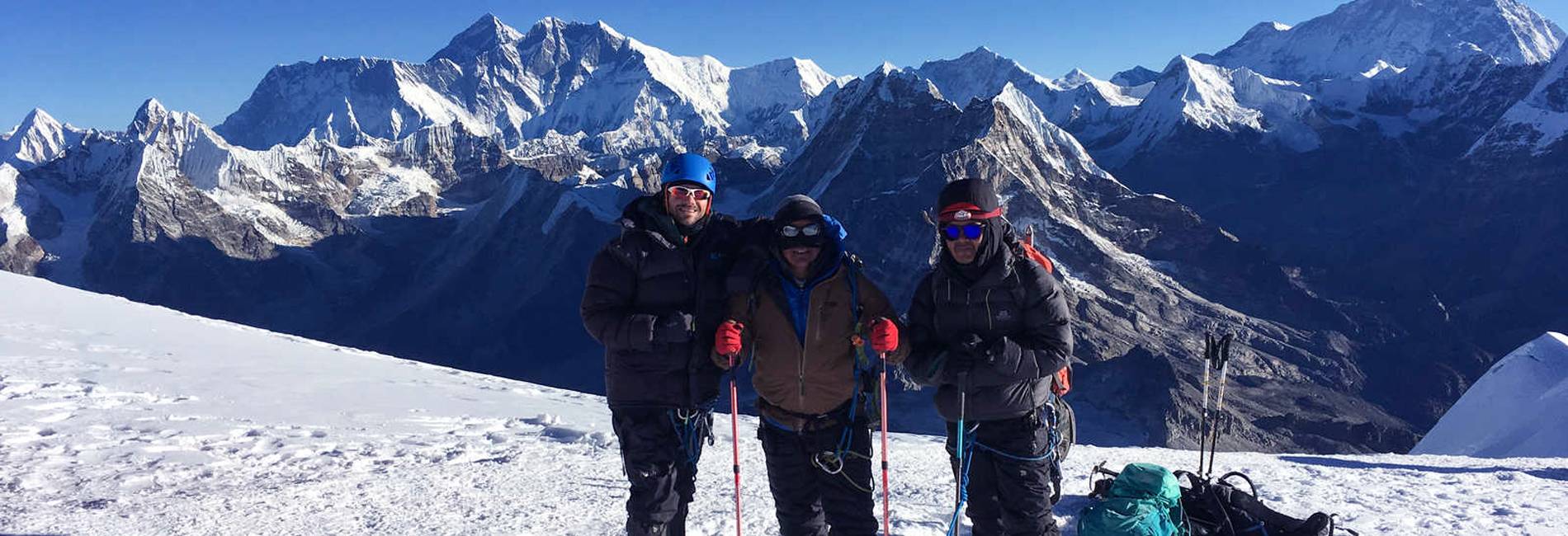
MERA PEAK CLIMBING
Mera Peak Climbing is an exhilarating adventure in Nepal that gives you an opportunity to reach the summit of Mera Peak at more than 6400m above sea level. Actually, it is the highest climbing (w...
What Should I Pack for Island Peak Climbing
Packing for Island Peak climbing in September requires careful consideration of both essential climbing gear and clothing suitable for varying weather conditions. Key items include:
- Clothing: Layering is essential with thermal base layers, insulated jacket, waterproof shell, trekking pants, and warm hats and gloves.
- Footwear: Sturdy, waterproof trekking boots with good ankle support and crampon-compatible soles.
- Climbing Gear: Crampons, ice axe, harness, helmet, ropes, and carabiners.
- Personal Equipment: Sleeping bag suitable for cold temperatures, headlamp with extra batteries, trekking poles, and a first aid kit.
- Miscellaneous: Sunglasses, sunscreen, lip balm, and a reusable water bottle.
Pack light but ensure you have everything needed for safety and comfort during the climb.
Can I Hire Equipment from Chhukung
Yes, Chhukung, a village en route to Island Peak, offers rental services for climbing equipment. This includes essential gear such as crampons, ice axes, harnesses, and helmets. Renting equipment locally can be convenient, especially for climbers who prefer not to carry bulky gear throughout the trek. It's advisable to inspect rented equipment for quality and functionality before embarking on the climb to ensure safety and reliability.
Solo Island Peak Climbing
Solo climbing of Island Peak is possible but not recommended due to the technical nature of the ascent and the inherent risks associated with high-altitude mountaineering. The peak requires proficiency in mountaineering skills, navigation through crevasses, and the ability to manage emergencies independently. Hiring a certified guide is strongly advised to enhance safety, provide route guidance, and manage logistics throughout the expedition. Guides also offer invaluable local knowledge, cultural insights, and support, ensuring a smoother and more enjoyable climb while prioritizing safety.
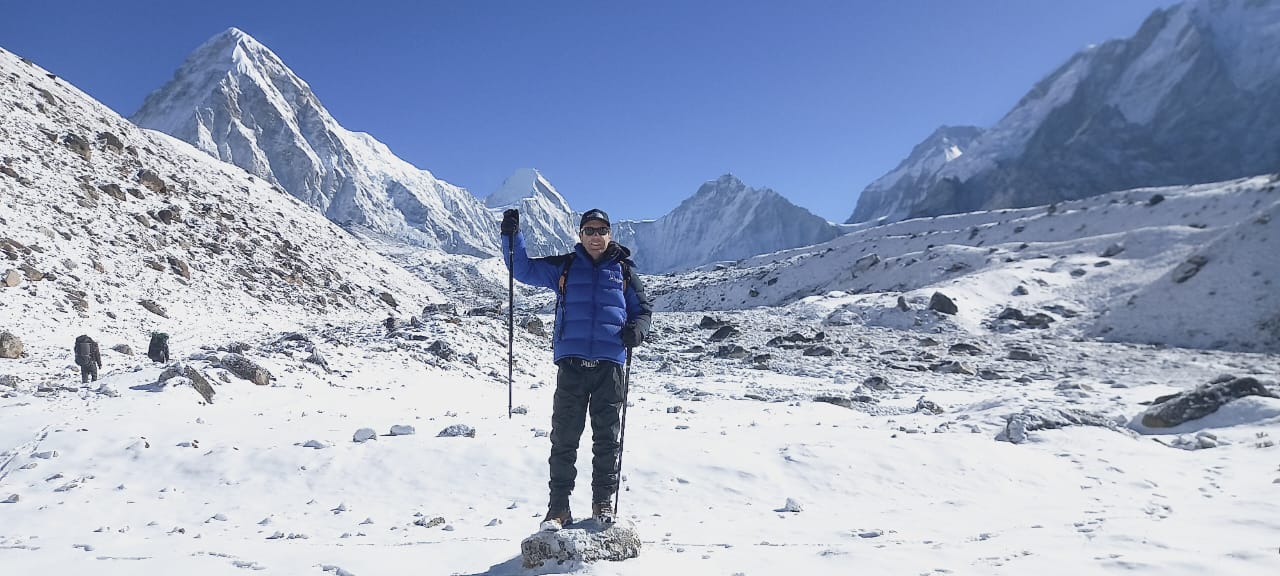
ISLAND AND LOBUCHE PEAK CLIMBING
Lobuche and Island Peak combo climbing expedition is a thrilling adventure that offers a unique opportunity to conquer two popular peaks in the Everest region of Nepal. Lobuche Peak (6,119m) and Islan...
Why Sherpa Expedition has Everyday Departure for Island Peak
Sherpa Expedition and Trekking offers daily departures for Island Peak to accommodate varying schedules and preferences of climbers. This flexibility allows climbers to choose departure dates that align with their travel plans, ensuring convenience and accessibility to the expedition. Sherpa Expedition maintains a well-established network of guides and support staff, ensuring high standards of safety, service, and client satisfaction. Daily departures also enable Sherpa Expedition to cater to individual climbers, small groups, and larger teams, providing personalized itineraries and logistical support tailored to the needs of each expedition. This approach reflects Sherpa Expedition's commitment to delivering exceptional mountaineering experiences while prioritizing safety, reliability, and customer care throughout the journey to Island Peak.
Is Dangerous to Climb Island Peak
Climbing Island Peak presents inherent challenges and risks associated with high-altitude mountaineering. While it is not considered among the most technically difficult peaks in the region, it demands proper preparation, physical fitness, and mountaineering skills. The ascent involves navigating crevasses, ascending steep sections, and dealing with unpredictable weather conditions that can change rapidly.
The dangers of climbing Island Peak include altitude sickness, which can be potentially life-threatening if not managed properly with adequate acclimatization and hydration. Other risks include frostbite due to extreme cold, avalanches in certain seasons, and logistical challenges such as flight cancellations to Lukla, which can affect the expedition schedule.
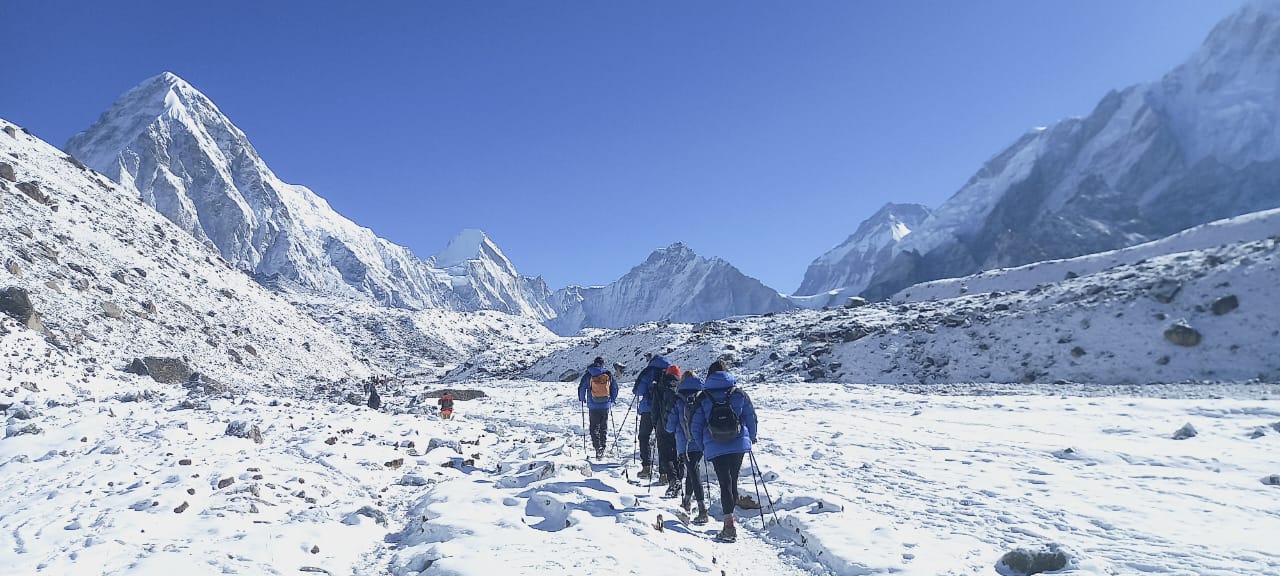
MERA AND ISLAND PEAK CLIMBING
Embark on a thrilling mountaineering adventure like no other with the Mera and Island Peak Climbing expedition crafted by We Sherpa Expedition and Trekking. This exclusive package is designed for adve...
Successful Tips to Climb Island Peak
- Physical Fitness: Prioritize cardiovascular endurance, strength training, and altitude acclimatization exercises.
- Skill Development: Gain proficiency in using mountaineering equipment such as crampons, ice axes, and ropes.
- Acclimatization: Follow a gradual ascent schedule with rest days to adapt to high altitudes effectively.
- Weather Monitoring: Stay informed about weather forecasts and adapt climbing plans accordingly.
- Hydration and Nutrition: Maintain proper hydration levels and consume balanced meals to sustain energy.
Conclusion
Climbing Island Peak in Nepal offers a rewarding mountaineering experience amidst stunning Himalayan landscapes. While the journey poses challenges and risks, careful preparation, including physical training, skill development, and logistical planning, can mitigate these dangers. Engaging with experienced guides and using reputable trekking companies like Sherpa Expedition ensures safety and enhances the overall climbing experience. Island Peak's summit rewards climbers with breathtaking views and a sense of achievement, making it a coveted destination for adventurers seeking to conquer a Himalayan peak.

LOBUCHE PEAK SUMMIT RETURN BY HELICOPTER
A real climbing adventure that will leave you stunned at the beauty of the Himalayan Mountains. The Lobuche Peak Climbing expedition in the spectacular Khumbu region of Nepal has been ranked by Lonely...
Island Peak Climbing Packages
Island Peak Summit Return By Helicopter
Island Peak Expedition 14 Days
Island Peak Expedition 15 Days
Everest Three Pass with Island Peak Climbing

MERA PEAK CLIMBING 17 DAYS
This is an excellent opportunity to climb Nepal’s highest peak without having to obtain a permit (6,476m/21,190ft). From the summit, you will have stunning views of several 8000m plus peaks, such as E...
Any Questions? Let Us Know.
Recent Posts
17th June, 2025


















